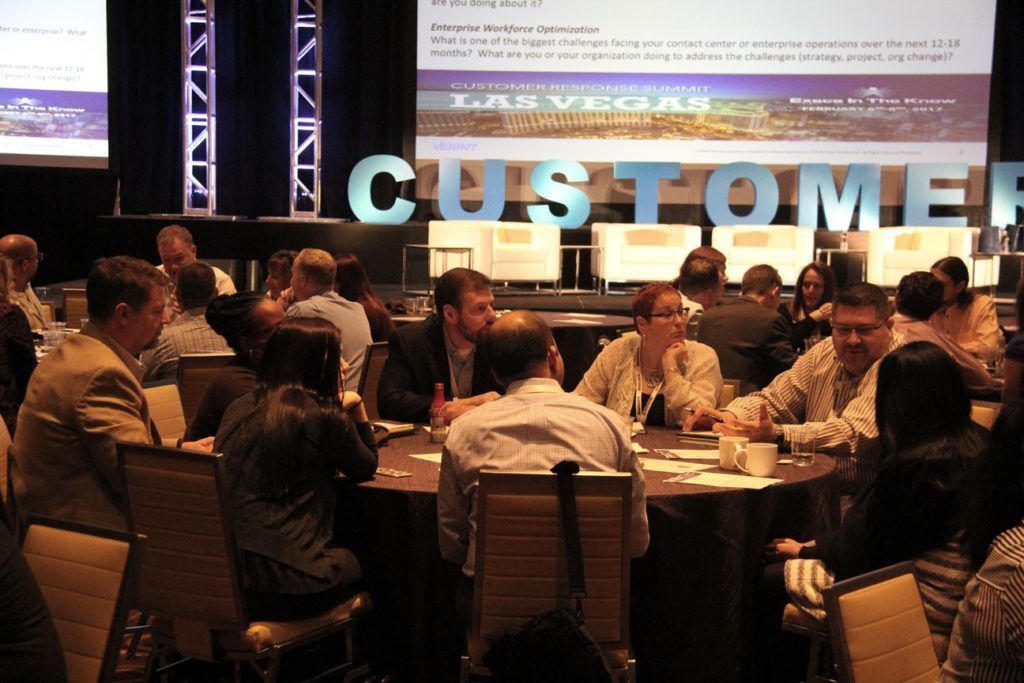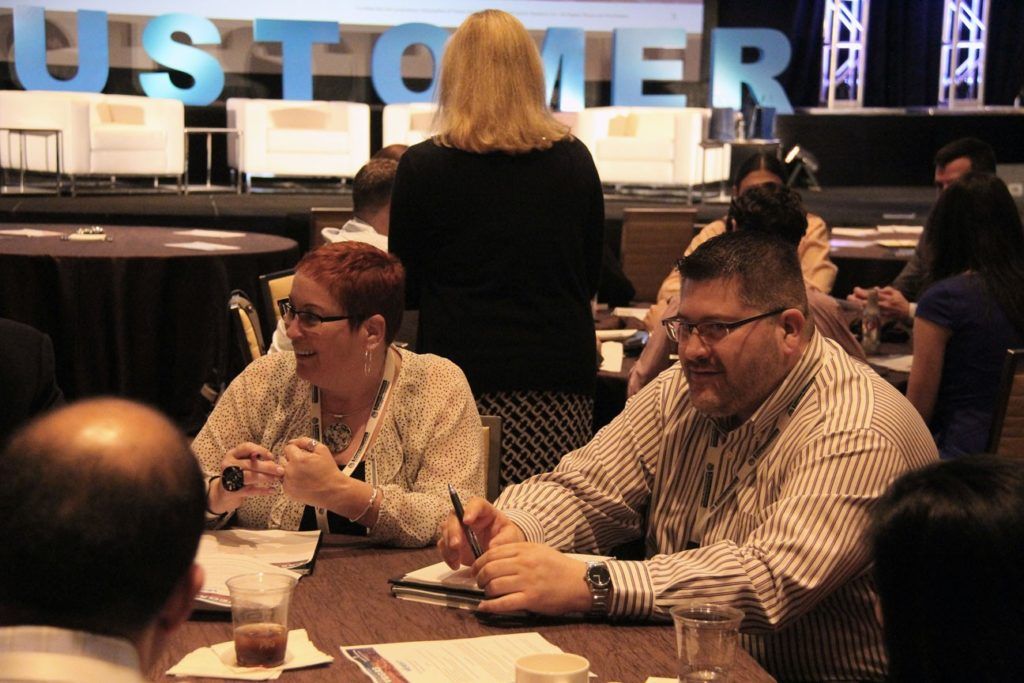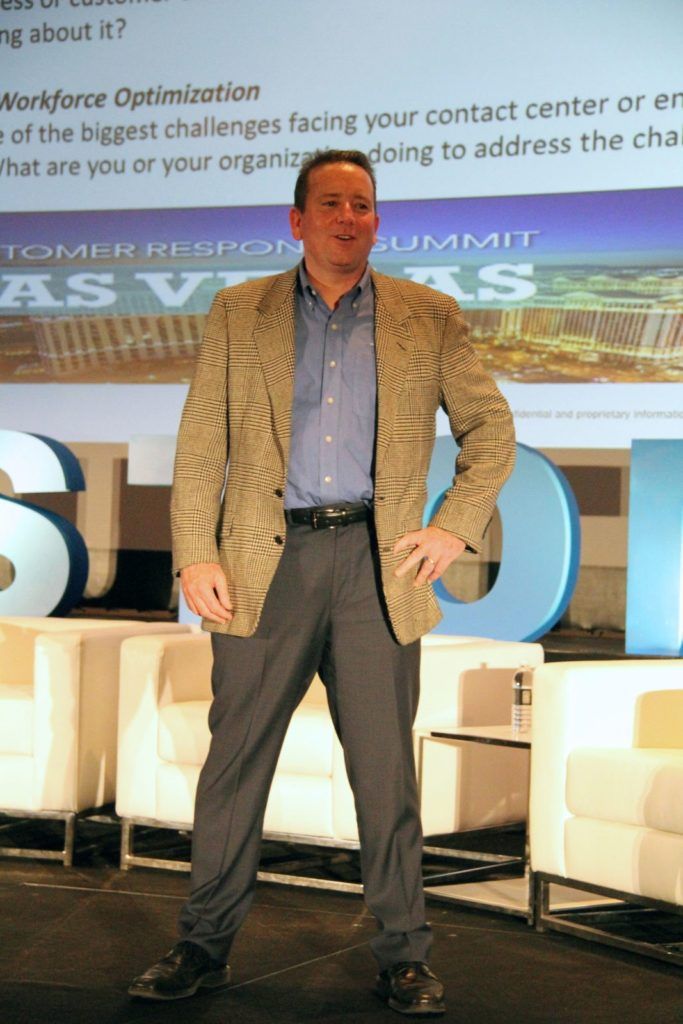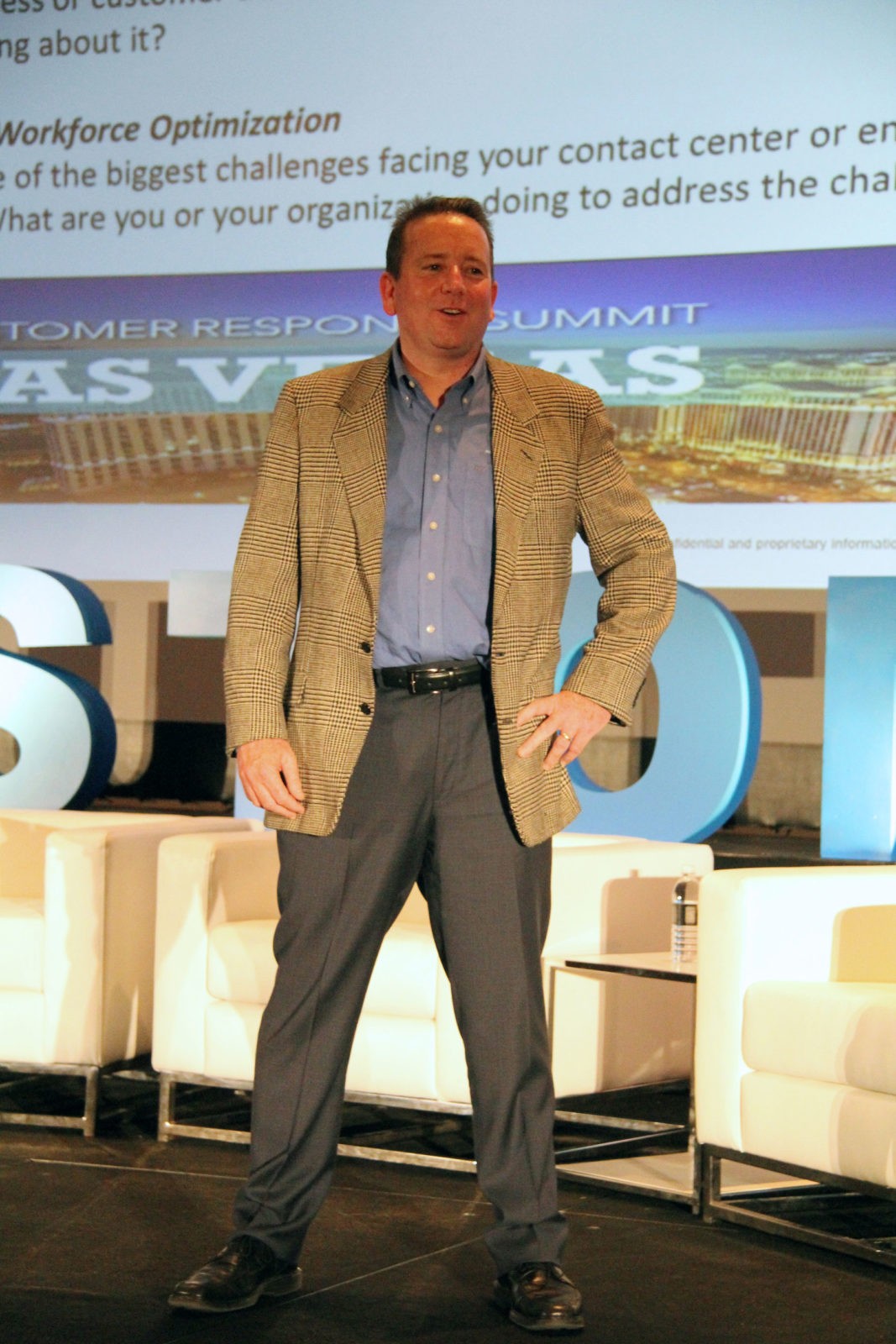
The following is a guest blog post from Greg Sherry, Vice President Marketing at Verint. For more information about Verint, visit their website.
Thank you for taking part in Verint’s interactive general session at Customer Response Summit Las Vegas called “Customer Engagement LIVE!” where we broke into discussion groups for interactive discussions and summary read back presentations. Here are some of the recommendations we heard from the groups as part of the breakout group notes and read backs:
What’s Old Is New Again. When is the last time you received a handwritten note or personal email from a business you engage with? It was memorable, wasn’t it? Think of ways you can incorporate genuine, personalized touches with customers. The strategy can be scalable: one “wow” moment can generate genuine delight and powerful word-of-mouth amplification.
Think Mobile. Do you have a mobile strategy? The need is clear: provide information, customer support, “wow” moments via mobile channels. But be careful: consumers often have limited ability to “digest” content you are sharing with them (because they are at the airport, walking, at home, multi-tasking), so be sure your content and communications are as short and to-the-point as you can.
Establish a common knowledge base across all channels to ensure consistent response. One company recognized the need to consolidate contact center systems to a single agent desktop. Customer service agents had difficulty serving customers in a timely manner and providing accurate information because information resided in 13 disparate systems. By consolidating all the systems into one agent desktop view, the company quickly reduced agent average handle time (AHT) and saw increased customer engagement scores. The unified access to the applications and information also increased employee productivity and helped provide a personalized experience for customers.
Develop a Journey Map as Part of Your Customer Experience Strategy. Our group defined a journey map as a diagram that illustrates the steps your customers go through when they engage with your company, across different channels and touch points. The more touch points you have, the more complicated — but necessary — the journey map becomes. Creating a customer journey map is an investment but is well worth the cost. For some creative ideas on journey maps, check out this recent blog post by Verint’s Nancy Porte – Five Tips for Building a Customer Journey Map.
Millennials/Diverse learners. Move away from phone to proactive chat; offer chat if automated resolution doesn’t work. Find ways to be “proactive” with communications when you anticipate that a customer’s expectations won’t be met.

Develop a Comprehensive Work-From-Home Strategy. One great reason to offer work from home is that you have the ability to recruit some of your organization’s biggest “fans,” regardless of their location. If you offer part time or flex time, you could have highly enthusiastic providers of information – and raving fans – who support your solutions or services. The customer experience these fans deliver could be very meaningful.
Use analytics not just for customer projects, but also for agent performance and metrics. Many companies use in depth analysis for customers, but more straight forward measurements for agents (AHT, quality score, Adherence etc.) Look at ways you can analyze agent performance more to impact customer experience. Identify which associates have the best cross selling abilities? Use their recorded interactions to train others. Who are the agents with best overall cx abilities? Have “gold” and “platinum” customers (highest value customers) routed to them since they are top in delivery of CX. Drive pilots of business changes based on analysis/date- and “go big” with winning ideas. Also explore further: how can you provide different levels of service based on the “value” of your clients to your business.
Drive customer experience excellence while also handling call-types that are more and more complex. One organization is leveraging contact recording and speech analytics to determine the reason for calls that fall into the highest 10th percentile of average handle time, which are the longest calls. We can’t solve everything, but we believe that if we can “fix” the issue(s) that cause the top three to four call types, we can free up resources and focus that will help us enhance the customer experience.
Build the Feeling of an In-Store Experience Online. Meet customers at the right moment when they are challenged. Know when they are about to defect. Provide the support they need when they need it. (How are you doing in this area? One idea is to implement a journey map project as mentioned above.)

Consider an Automation Pilot. Organizations are under pressure to increase processing efficiency and productivity, reduce errors, cut operational expenses, and maintain security and regulatory compliance. Key advancements in the areas of robots/bots, artificial intelligence, and machine learning are creating opportunities to service and engage with customers like never before.
Organizations should consider automating repetitive and time-consuming processes, allowing employees to focus on more complex tasks, cross-selling and delivering a personalized experience. The net: position automation as beneficial—and not a threat to your employees’ jobs.
Do you have some creative or best practices ideas to add? We’d love to hear those, too! Help us continue the conversation and submit your idea on Twitter by using the hashtag #CustEngLive. You can also follow and tag us on Twitter @ExecsInTheKnow and @Verint.


